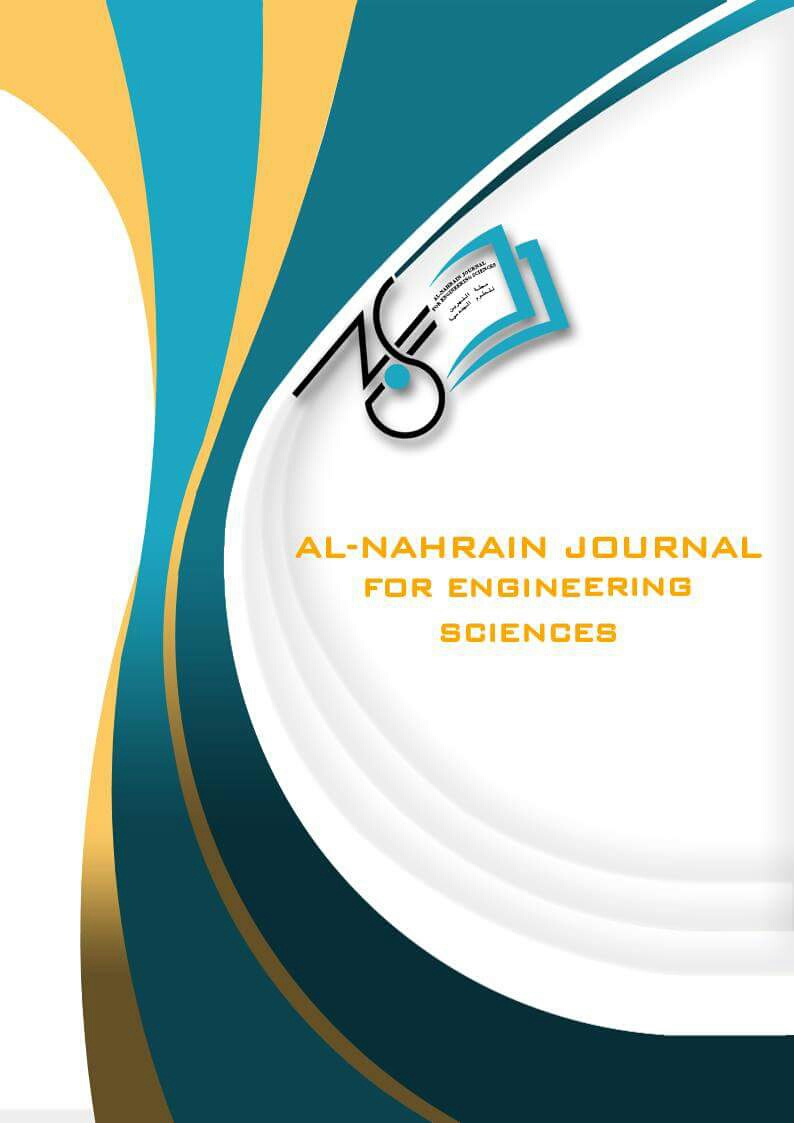The effect of different heavy metals pollutants in refinery effluent on corrosion rate of carbon steel
DOI:
https://doi.org/10.29194/NJES.26040320Keywords:
corrosion rate, Carbon Steel, inorganic pollutants, flow velocity, wastewaterAbstract
The presence of heavy metal pollutants in refinery effluent significantly impacts the corrosion rate of carbon steel. The focus of this research is to analyze the impact of various inorganic pollutants, including copper, vanadium, nickel, and chromium ions, on the corrosion of carbon steel across different solutions. After conducting a thorough examination of various operating conditions, including pollutant concentration (ranging from 300-3000 ppm), temperature (30-60? C), and flow velocity (0-800 rpm). Our research shows that copper ions have the highest corrosion rate, with vanadium ions being a close second. Conversely, nickel and chromium had the most negligible impact on corrosion rate and, in some instances, even exhibited corrosion inhibition effects. It was also observed that an increase in flow velocity and temperature significantly amplified the corrosion rate of the metal ions investigated.
Downloads
References
Al-Moubaraki, A. H., & Obot, I. B. (2021). Corrosion challenges in petroleum refinery operations: Sources, mechanisms, mitigation, and future outlook. Journal of Saudi Chemical Society, 25(12), 101370.
Mizzouri, N. S., & Shaaban, M. G. (2013). Individual and combined effects of organic, toxic, and hydraulic shocks on sequencing batch reactor in treating petroleum refinery wastewater. Journal of hazardous materials, 250, 333-344.
Saien, J., & Nejati, H. (2007). Enhanced photocatalytic degradation of pollutants in petroleum refinery wastewater under mild conditions. Journal of hazardous materials, 148(1-2), 491-495.
El-Shamy, A. M., El-Boraey, H. A., & El-Awdan, H. F. (2017). Chemical treatment of petroleum wastewater and its effect on the corrosion behavior of steel pipelines in sewage networks. J Chem Eng Process Technol, 8(1).
Woodard, F.. Industrial waste treatment handbook. 1st Edition, USA, Library of Congress Cataloging-in Publication Data Elsevier, 2001.
Sapkota, K. R. (2013). Effect of corrosive pollutants on Gram Production. Janapriya Journal of Interdisciplinary Studies, 2, 61-64.
Lusinier, N., Seyssiecq, I., Sambusiti, C., Jacob, M., Lesage, N., & Roche, N. (2021). A comparative study of conventional activated sludge and fixed bed hybrid biological reactor for oilfield produced water treatment: Influence of hydraulic retention time. Chemical Engineering Journal, 420, 127611.
Al-Khalid, T., & El-Naas, M. H. (2018). Organic contaminants in refinery wastewater: characterization and novel approaches for biotreatment. Recent insights in petroleum science and engineering, 371.
Nosier, S. A. (2003). The effects of petroleum refinery wastewater on the rate of corrosion of steel equipment. Anti-Corrosion Methods and Materials, 50(3), 217-222.
Mobin, M., Malik, A. U., Andijani, I. N. (2007). The effect of heavy metal ions on the localized corrosion behavior of steels. Desalination, 217(1-3), 233-241.
Sherif, E. S. M. (2014). A comparative study on the electrochemical corrosion behavior of iron and X-65 steel in 4.0 wt% sodium chloride solution after different exposure intervals. Molecules, 19(7), 9962-9974.
Slaimana, Q. J., & Hasan, B. O. (2010). Study on corrosion rate of carbon steel pipe under turbulent flow conditions. The Canadian Journal of Chemical Engineering, 88(6), 1114-1120.
Hasan, B. O. (2015). Galvanic corrosion of aluminum–steel under two-phase flow dispersion conditions of CO2 gas in CaCO3 solution. Journal of Petroleum Science and Engineering, 133, 76-84.
Hasan, B. O., & Aziz, S. M. (2017). Corrosion of carbon steel in two phase flow (CO2 gas-CaCO3 solution) controlled by sacrificial anode. Journal of Natural Gas Science and Engineering, 46, 71-79.
Mahato, B. K., Cha, C. Y., & Shemilt, L. W. (1980). Unsteady state mass transfer coefficients controlling steel pipe corrosion under isothermal flow conditions. Corrosion Science, 20(3), 421-441.
Ali, Marwa Essam Mohammed. “Corrosion behavior of carbon steel in the presence of different corrosive pollutants under concentration cell formation.” MSC thesis, Department of Chemical Eng., Al-Nahrain University, 2019.
Marcus, P. Corrosion mechanisms in theory and practice. CRC press, 2001.
Perez N. “Electrochemistry and Corrosion Science”. Kluwer Academic Publishers, USA, 2004.
Verma, N. K., & Verma, N.. Academic Chemistry IX. Laxmi Publications, (2012).
Revie, R. W. . Corrosion and corrosion control: an introduction to corrosion science and engineering. John Wiley & Sons, 2008.
Hasan, B. O., & Sadek, S. A. (2013). Corrosion behavior of carbon steel in oxygenated sodium sulphate solution under different operating conditions. Adv. Chem. Eng. Res, 2(3), 61-71.
Roberge, P. R. . Handbook of corrosion engineering. New York: Mcgraw-hill, 2000.
Yong, X. Y., Zhang, Y. Q., Li, D. L., Ji, J., Qu, Y. X., & Wang, J. D. (2011). Effect of near-wall hydrodynamic parameters on flow induced corrosion. Corrosion Science and Protection Technology, 12(3), 245-250.
Li, Z., Zhang, J., & Cheng, J. (2017). The influence of critical flow velocity on corrosion of stainless steel. Journal of Failure Analysis and Prevention, 17, 1234-1240.
Shreir, L. L., Jarman, R. A., Burstein, G. T. 2000. “Corrosion: Metal”. Environment Reactions, vol. 1, New Yourk, 2000.
Downloads
Published
Issue
Section
License
Copyright (c) 2024 Sahir M. Al-Zuraiji, Basim O. Hasan, Ola M. Abdulwaheed

This work is licensed under a Creative Commons Attribution-NonCommercial 4.0 International License.
The authors retain the copyright of their manuscript by submitting the work to this journal, and all open access articles are distributed under the terms of the Creative Commons Attribution-NonCommercial 4.0 International (CC-BY-NC 4.0), which permits use for any non-commercial purpose, distribution, and reproduction in any medium, provided that the original work is properly cited.













